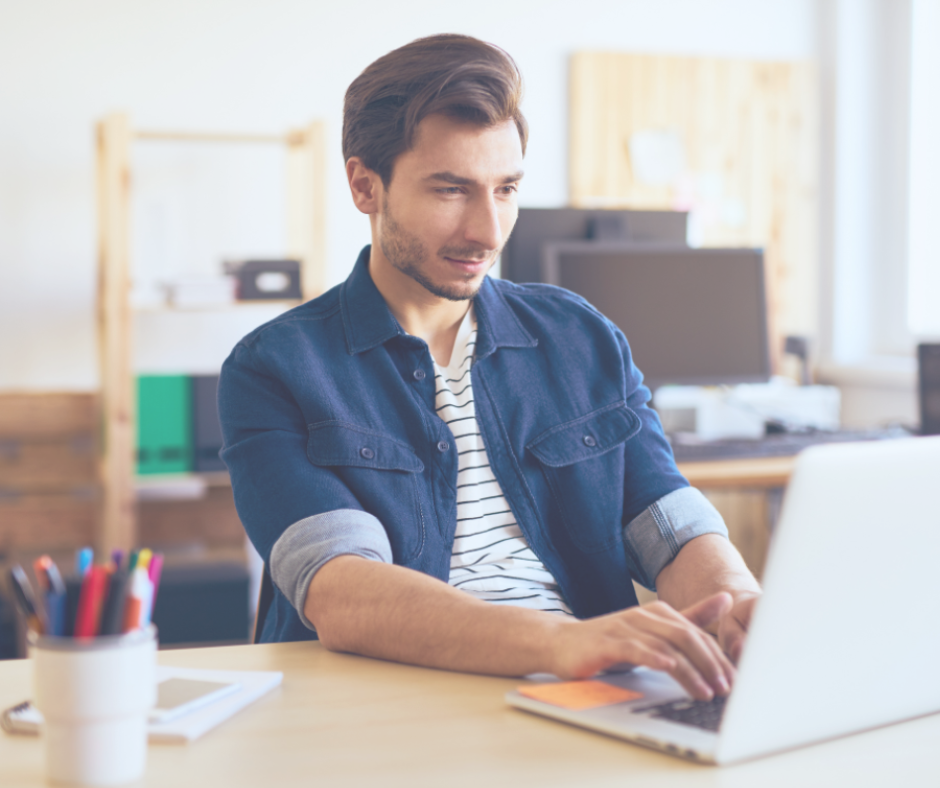SAFe Scrum Master Certification TRAINING HIGHLIGHTS IN BULGARIA
The Most Effective SAFe Scrum Master Certification Exam Preparation
SAFe Scrum Master Exam: Tips to Become a Perfectionist
The SAFe Scrum Master exam is a certification that validates your knowledge and skills in facilitating Agile teams within a SAFe environment. It is designed for individuals who have a good understanding of Scrum and Agile principles and who want to learn how to apply these principles in a scaled Agile context.
Benefits of SAFe Scrum Master Certification
Obtaining SAFe Scrum Master certification offers several significant benefits, including:
- Enhanced knowledge and skills: The certification process will deepen your understanding of SAFe and Agile principles and practices, enabling you to effectively apply them in your role.
- Expanded career opportunities: SAFe Scrum Masters are in high demand, and certification can make you a more attractive candidate for leadership positions within Agile organizations.
- Improved ability to lead Agile teams: The certification equips you with the skills to effectively facilitate Agile teams, foster collaboration, and drive successful outcomes.
- Recognition of expertise: SAFe Scrum Master certification is a respected credential that demonstrates your commitment to Agile and SAFe, validating your expertise in the field.
SAFe Scrum Master Exam Topics
The SAFe Scrum Master exam covers a wide range of topics, including:
- SAFe Principles and Values: Understanding the core principles and values that underpin SAFe, such as transparency, inspection, adaptation, collaboration, and empowerment.
- Agile Manifesto and Scrum Framework: Knowledge of the Agile Manifesto and the Scrum framework, including roles, artifacts, and ceremonies.
- SAFe Big Picture: Understanding the four levels of SAFe (Team, Program, Value Stream, Portfolio) and their interrelationships.
- SAFe Implementation: Knowledge of the steps involved in implementing SAFe within an organization, including the Lean Portfolio Management (LPM) process and the Program Increment (PI) Planning.
- SAFe Roles: Understanding the roles of various stakeholders within a SAFe environment, such as the Scrum Master, Product Owner, Release Train Engineer, Agile Coach, and System Architect.
- SAFe Artifacts: Knowledge of the SAFe artifacts, such as the Vision, Roadmap, Program Increment (PI) Planning, and Backlog Refinement.
- SAFe Events: Understanding the SAFe events, including PI Planning, Iteration Planning, Daily Scrum, Sprint Review, Sprint Retrospective, and Inspect and Adapt.
- SAFe Continuous Delivery Pipeline: Knowledge of the value stream flow and the tools used for continuous delivery, such as version control, build automation, and deployment pipelines.
- SAFe Leadership: Understanding the leadership principles and practices required for successful SAFe implementation, including servant leadership, empowerment, and continuous improvement.
How to Prepare for the SAFe Scrum Master Exam
To prepare for the SAFe Scrum Master exam, consider the following strategies:
- Attend a SAFe Scrum Master training course: The official SAFe training courses provide a comprehensive overview of the framework and prepare you for the exam.
- Review SAFe materials: Refer to the SAFe Guide, SAFe for Teams, and other official resources to reinforce your understanding of key concepts.
- Practice with mock exams: Utilize online resources and practice exams to assess your knowledge and identify areas for improvement.
- Join a study group: Collaborate with other SAFe Scrum Master candidates to discuss topics, share insights, and stay motivated.
- Seek mentorship: Connect with experienced SAFe Scrum Masters who can provide guidance, answer questions, and offer valuable advice.
Tips for Taking the SAFe Scrum Master Exam
- Be prepared: Ensure a thorough understanding of the SAFe framework and exam topics.
- Manage your time: Pace yourself effectively to answer all questions within the allotted time.
- Read questions carefully: Pay attention to the details and ensure you understand what is being asked.
- Use the process of elimination: If unsure of an answer, try to eliminate incorrect options.
- Stay calm and focused: Maintain a positive mindset and avoid getting overwhelmed.
Conclusion
The SAFe Scrum Master certification is a valuable asset for individuals seeking to advance their careers in Agile project management. By effectively preparing for the exam and leveraging the resources available, you can increase your chances of success and unlock the benefits of this sought-after credential. Remember, the journey to becoming a certified SAFe Scrum Master is an investment in your professional growth and future opportunities.
Additional Considerations
- Consider the cost of the certification: The cost of the SAFe Scrum Master certification can vary depending on the training provider and the location of the course. Be sure to factor in the cost of the certification when making your decision.
- Think about your career goals: The SAFe Scrum Master certification can be a valuable asset for anyone who wants to advance their career in Agile project management. However, it is important to consider your career goals and make sure that the certification is a good fit for you.
- Do your research: There are many different training providers that offer SAFe Scrum Master certification. It is important to do your research and choose a provider that is reputable and offers high-quality training.
- Be patient: It takes time to prepare for and pass the SAFe Scrum Master exam. Don't get discouraged if you don't pass the first time. Just keep studying and practicing, and you will eventually achieve your goal.
By carefully considering these factors, you can make an informed decision about whether or not to pursue the SAFe Scrum Master certification. Additionally, it is important to note that the SAFe Scrum Master certification is not a one-time event. It is a journey that requires continuous learning and development. Once you are certified, you should continue to stay up-to-date on the latest trends and best practices in Agile project management. You should also consider pursuing additional SAFe certifications, such as the SAFe Advanced Program Manager or the SAFe Release Train Engineer.
By investing in the SAFe Scrum Master certification, you can increase your knowledge, skills, and career opportunities. You can also help your organization to become more agile and successful.
Furthermore, here are some additional tips for preparing for the SAFe Scrum Master exam:
- Create a study plan: A study plan can help you stay organized and focused. Break down the exam topics into smaller, manageable chunks and allocate time for each.
- Use flashcards: Flashcards can be a helpful way to memorize key concepts and terms.
- Join an online community: There are many online communities where you can connect with other SAFe Scrum Master candidates. This can be a great way to get support and ask questions.
- Take advantage of free resources: There are many free resources available online that can help you prepare for the SAFe Scrum Master exam. These resources include practice tests, study guides, and articles.
- Don't give up: It may take some time to prepare for and pass the SAFe Scrum Master exam. Don't give up if you don't pass the first time. Just keep studying and practicing, and you will eventually achieve your goal.
By following these tips, you can increase your chances of success on the SAFe Scrum Master exam.
SAFe Scrum Master Exam Format and Rules
The SAFe Scrum Master exam is a computer-based multiple-choice test designed to assess your knowledge and understanding of the Scaled Agile Framework (SAFe). Here's a breakdown of the exam format and rules:
Exam Format
- Multiple-Choice Questions: The exam consists of multiple-choice questions that require you to select the most appropriate answer from a given set of options.
- Time Limit: You will have a specific amount of time to complete the exam. The exact duration may vary, but it typically ranges from [insert approximate range of time].
- Closed-Book: The exam is closed-book, meaning you cannot refer to any external materials during the testing period.
Exam Rules
- Confidentiality: You are prohibited from sharing any information about the exam questions or content with others.
- Prohibited Materials: You are not allowed to bring any electronic devices, such as calculators, phones, or laptops, into the testing room.
- Testing Environment: The testing environment will be monitored, and you may be subject to surveillance.
- Retake Policy: If you fail the exam, you may be eligible to retake it after a specified waiting period. The retake policy may vary depending on the training provider.
Preparing for the Exam
To increase your chances of success, it's important to prepare thoroughly for the SAFe Scrum Master exam. Here are some tips:
- Review the Syllabus: Familiarize yourself with the topics covered in the exam syllabus.
- Study the Official SAFe Materials: Use the official SAFe training materials and study guides to reinforce your understanding of key concepts.
- Practice with Mock Exams: Take practice exams to assess your knowledge and identify areas where you need to improve.
- Join Study Groups: Collaborate with other SAFe Scrum Master candidates to discuss topics, share insights, and learn from each other.
- Seek Mentorship: Find a mentor who has already achieved SAFe Scrum Master certification.
Exam Day Tips
- Arrive Early: Arrive at the testing center well in advance to allow time for registration and any necessary procedures.
- Stay Calm and Focused: Avoid rushing and try to remain calm and focused throughout the exam.
- Read Questions Carefully: Read each question carefully before selecting an answer.
- Manage Your Time: Use your time wisely to ensure you complete the exam within the allotted time.
By following these guidelines and preparing effectively, you can increase your chances of successfully passing the SAFe Scrum Master exam.
HIGH DEMAND FOR SAFE (SCALED AGILE FRAMEWORK) PROFESSIONALS IN BULGARIA
SAFe Scrum Master Certification Among the Highest Paying Certifications





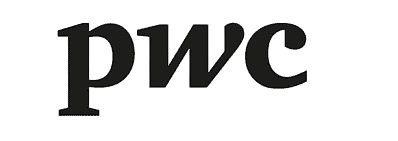
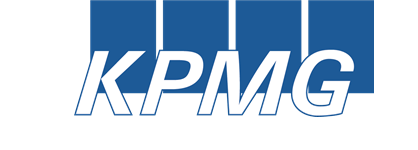

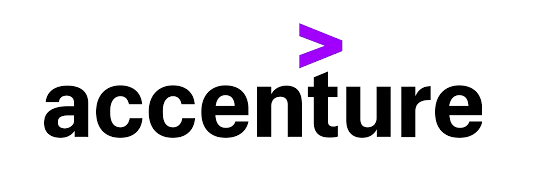

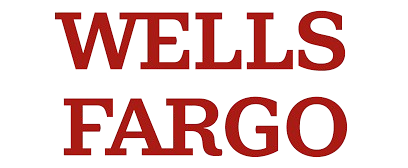

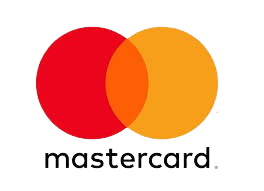

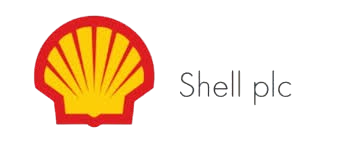




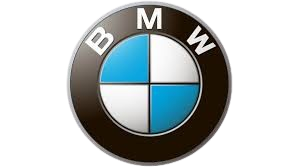

SAFe Scrum Master Exam Preparation and Certification: A Full Guidance for Bulgaria
Introduction
Becoming a SAFe Scrum Master is a significant step toward advancing your career in Agile project management. This certification validates your knowledge and skills in facilitating Agile teams within a Scaled Agile Framework (SAFe) environment. To successfully pass the SAFe Scrum Master exam in Bulgaria, thorough preparation is essential. This guide provides detailed insights into the exam, key concepts, effective study strategies, and valuable resources to help you achieve certification.
SAFe Scrum Master Exam Topics
The SAFe Scrum Master exam covers a wide range of topics, including:
- SAFe Principles and Values: Understanding the core principles and values that underpin SAFe, such as transparency, inspection, adaptation, collaboration, and empowerment.
- Agile Manifesto and Scrum Framework: Knowledge of the Agile Manifesto and the Scrum framework, including roles, artifacts, and ceremonies.
- SAFe Big Picture: Understanding the four levels of SAFe (Team, Program, Value Stream, Portfolio) and their interrelationships.
- SAFe Implementation: Knowledge of the steps involved in implementing SAFe within an organization, including the Lean Portfolio Management (LPM) process and the Program Increment (PI) Planning.
- SAFe Roles: Understanding the roles of various stakeholders within a SAFe environment, such as the Scrum Master, Product Owner, Release Train Engineer, Agile Coach, and System Architect.
- SAFe Artifacts: Knowledge of the SAFe artifacts, such as the Vision, Roadmap, Program Increment (PI) Planning, and Backlog Refinement.
- SAFe Events: Understanding the SAFe events, including PI Planning, Iteration Planning, Daily Scrum, Sprint Review, Sprint Retrospective, and Inspect and Adapt.
- SAFe Continuous Delivery Pipeline: Knowledge of the value stream flow and the tools used for continuous delivery, such as version control, build automation, and deployment pipelines.
- SAFe Leadership: Understanding the leadership principles and practices required for successful SAFe implementation, including servant leadership, empowerment, and continuous improvement.
How to Prepare for the SAFe Scrum Master Exam
To prepare for the SAFe Scrum Master exam, consider the following strategies:
- Attend a SAFe Scrum Master training course: The official SAFe training courses provide a comprehensive overview of the framework and prepare you for the exam.
- Review SAFe materials: Refer to the SAFe Guide, SAFe for Teams, and other official resources to reinforce your understanding of key concepts.
- Practice with mock exams: Utilize online resources and practice exams to assess your knowledge and identify areas for improvement.
- Join a study group: Collaborate with other SAFe Scrum Master candidates to discuss topics, share insights, and stay motivated.
- Seek mentorship: Connect with experienced SAFe Scrum Masters who can provide guidance, answer questions, and offer valuable advice.
Tips for Taking the SAFe Scrum Master Exam
- Be prepared: Ensure a thorough understanding of the SAFe framework and exam topics.
- Manage your time: Pace yourself effectively to answer all questions within the allotted time.
- Read questions carefully: Pay attention to the details and ensure you understand what is being asked.
- Use the process of elimination: If unsure of an answer, try to eliminate incorrect options.
- Stay calm and focused: Maintain a positive mindset and avoid getting overwhelmed.
Valuable Resources
- Scaled Agile Framework (SAFe) website: https://scaledagile.com/
- SAFe Community: https://community.scaledagile.com/
- SAFe Certified Scrum Master (CSM) Course: https://scaledagile.com/
- SAFe Practice Exams: [invalid URL removed]
- SAFe Study Guides and Books: https://support.scaledagile.com/s/article/Exam-Details-Leading-SAFe-SAFe-Agilist-6-0
- Online Forums and Communities: Participate in online discussions and forums to connect with other SAFe enthusiasts.
Additional Tips
- Understand the Agile Manifesto: Familiarize yourself with the Agile Manifesto and its underlying principles. This will provide a solid foundation for understanding the SAFe framework.
- Practice Agile Techniques: Gain practical experience with Agile techniques, such as Scrum, Kanban, and Extreme Programming. This will help you apply your knowledge to real-world scenarios.
- Learn about Scaled Agile Practices: Understand the specific practices and tools used in Scaled Agile, such as Lean Portfolio Management, Value Stream Mapping, and Program Increment Planning.
- Develop Problem-Solving Skills: The SAFe Scrum Master exam often requires you to apply your knowledge to solve hypothetical scenarios. Practice problem-solving techniques to improve your ability to think critically and make informed decisions.
- Network with Other SAFe Professionals: Connect with other SAFe practitioners to share experiences, learn from their insights, and stay updated on industry trends.
Beyond the Certification
While achieving the SAFe Scrum Master certification is a significant accomplishment, it's important to remember that your journey doesn't end there. Continuously learning and developing your skills is essential for staying relevant in the field of Agile project management. Consider the following opportunities:
- Specialization: Explore opportunities to specialize in specific areas of Agile, such as Agile Coaching, Agile Product Management, or Scaled Agile for Technology.
- Mentorship: Seek mentorship from experienced Agile professionals to gain valuable insights and guidance.
- Networking: Build relationships with other Agile practitioners through networking events, online communities, and professional organizations.
- Continuous Learning: Stay up-to-date with the latest trends and best practices in Agile project management by attending conferences, webinars, and reading industry publications.
Key Responsibilities of a SAFe Scrum Master:
- Facilitate Agile Teams: Guide teams in applying Agile practices, such as Scrum, Kanban, and Extreme Programming, within a scaled context.
- Remove Impediments: Identify and eliminate obstacles that hinder team progress, ensuring a smooth flow of work.
- Coach Agile Teams: Provide guidance and support to team members, helping them develop Agile skills and mindset.
- Foster Collaboration: Promote collaboration and teamwork among team members, stakeholders, and other Agile teams.
- Ensure Compliance with SAFe Principles: Ensure that the team adheres to the principles and practices of the Scaled Agile Framework.
- Support Program Increment Planning: Contribute to the Program Increment (PI) Planning process, helping to align teams and establish objectives.
- Facilitate Continuous Improvement: Encourage a culture of continuous improvement within the team, identifying areas for enhancement and implementing effective solutions.
Preparing for the SAFe Scrum Master Certification
To successfully achieve the SAFe Scrum Master certification, thorough preparation is essential. Here are some key steps to consider:
- Understand the SAFe Framework: Gain a deep understanding of the Scaled Agile Framework, including its principles, values, and four levels (Team, Program, Value Stream, Portfolio).
- Master Agile Fundamentals: Review the Agile Manifesto and Scrum framework, including roles, artifacts, and ceremonies.
- Study SAFe Roles and Responsibilities: Familiarize yourself with the roles of various stakeholders within a SAFe environment, such as the Product Owner, Release Train Engineer, and Agile Coach.
- Learn SAFe Practices: Understand the specific practices and tools used in Scaled Agile, including Lean Portfolio Management, Value Stream Mapping, and Program Increment Planning.
- Practice Problem-Solving: Develop problem-solving skills to address challenges that may arise in a scaled Agile environment.
- Review SAFe Materials: Utilize official SAFe training materials, study guides, and practice exams to reinforce your learning.
- Join Study Groups: Connect with other SAFe Scrum Master candidates to discuss topics, share insights, and learn from each other.
- Seek Mentorship: Find a mentor who has already achieved SAFe Scrum Master certification. They can provide guidance, answer your questions, and offer valuable advice.
- Stay Updated: Keep up with the latest developments in the Agile and SAFe communities. Attend webinars, conferences, and read industry publications to stay informed about best practices and emerging trends.
Certification Process
- Attend a SAFe Scrum Master Course: Enroll in a certified SAFe Scrum Master course offered by Scaled Agile or authorized training partners.
- Prepare for the Exam: Study the course material, practice with mock exams, and review key concepts.
- Take the Exam: The SAFe Scrum Master exam is an online multiple-choice test that assesses your knowledge of the framework.
- Receive Certification: Upon successfully passing the exam, you will receive the SAFe Scrum Master certification.
Benefits of SAFe Scrum Master Certification
- Career Advancement: The certification can enhance your career prospects and open doors to new opportunities.
- Increased Job Security: As Agile methodologies continue to gain popularity, certified SAFe Scrum Masters are in high demand.
- Enhanced Skills: The certification validates your knowledge of Agile principles and practices, making you a valuable asset to any organization.
- Global Recognition: SAFe is a globally recognized framework, and the certification is respected worldwide.
- Improved Team Performance: By facilitating Agile teams and removing impediments, certified SAFe Scrum Masters can help teams achieve higher levels of productivity and efficiency.
- Contribution to Organizational Success: SAFe Scrum Masters play a vital role in implementing and scaling Agile practices within organizations, contributing to overall business success.
Conclusion
Preparing for the SAFe Scrum Master exam requires dedication, effective study strategies, and a thorough understanding of the SAFe framework. By following the guidelines outlined in this guide, you can increase your chances of success and become a certified SAFe Scrum Master in Bulgaria. Remember to stay organized, practice regularly, and seek support from the SAFe community. With consistent effort and a focused approach, you can achieve your certification goals and contribute to the success of Agile projects within a scaled environment.
WHY SCHOLARACAD FOR SAFe Scrum Master Certification TRAINING IN BULGARIA
The ScholarAcad Advantage
SAFe Scrum Master Course Cost in Bulgaria: Train at a Reasonable Cost
The cost of a SAFe Scrum Master course in Bulgaria can vary depending on several factors, including:
- Training provider: The cost of the course will vary depending on the training provider. Some providers are more expensive than others. Reputable providers with experienced instructors and comprehensive curriculum may charge higher fees, but they often offer better value.
- Course format: The cost of the course will also vary depending on the format. In-person courses are typically more expensive than online courses. However, online courses may require additional time and self-discipline.
- Course location: The cost of the course may also vary depending on the location. Courses in major cities may be more expensive than courses in smaller towns.
- Additional services: Some training providers may offer additional services, such as exam preparation materials or job placement assistance. These services will add to the cost of the course.
Average Cost of a SAFe Scrum Master Course in Bulgaria
The average cost of a SAFe Scrum Master course in Bulgaria is around [insert average cost]. However, this is just an estimate and the actual cost may vary depending on the factors listed above.
Tips for Finding Affordable SAFe Scrum Master Courses
- Compare prices: It is important to compare prices from different training providers to find the best deal. Consider factors such as the provider's reputation, instructor experience, and course curriculum.
- Look for discounts: Some training providers may offer discounts for group bookings or early bird registrations. Check with multiple providers to see if they have any ongoing promotions.
- Consider online courses: Online courses are typically more affordable than in-person courses. They offer flexibility and allow you to learn at your own pace. However, online courses may require more self-discipline and may not provide the same level of interaction as in-person courses.
- Check for government funding: If you are eligible, you may be able to access government funding to help offset the cost of the course. This can be a great way to make the certification more affordable for individuals and organizations.
- Join a study group: Collaborating with other SAFe Scrum Master candidates by joining study groups or online forums can help you prepare for the exam and potentially reduce the cost of training materials.
- Negotiate: Don't be afraid to negotiate with training providers, especially if you are a group of individuals or a corporate client. Many providers are willing to offer discounts for larger groups.
Additional Considerations
- Hidden costs: Be aware of any hidden costs associated with the course, such as exam fees, certification fees, or travel expenses.
- Return on investment: Consider the potential return on investment of the certification. The increased earning potential and career opportunities that come with SAFe Scrum Master certification can often justify the initial cost.
- Quality of training: Choose a provider that offers high-quality training and experienced instructors. A well-structured course with knowledgeable instructors can enhance your learning experience and increase your chances of passing the exam.
By carefully considering these factors and taking advantage of available resources, you can find an affordable SAFe Scrum Master course that meets your needs and helps you achieve your career goals.
Course Structure and Fees for SAFe Scrum Master Certification in Bulgaria
Course Structure
The SAFe Scrum Master course typically follows a structured format that covers the key concepts and principles of the Scaled Agile Framework (SAFe). The course content may vary slightly depending on the training provider, but generally includes the following topics:
- SAFe Principles and Values: Understanding the core principles and values that underpin SAFe, such as transparency, inspection, adaptation, collaboration, and empowerment.
- Agile Manifesto and Scrum Framework: Knowledge of the Agile Manifesto and the Scrum framework, including roles (Product Owner, Scrum Master, Development Team), artifacts (Product Backlog, Sprint Backlog, Increment), and ceremonies (Sprint Planning, Daily
Scrum, Sprint Review, Sprint Retrospective).
- SAFe Big Picture: Understanding the four levels of SAFe (Team, Program, Value Stream, Portfolio) and their interrelationships.
- SAFe Implementation: Knowledge of the steps involved in implementing SAFe within an organization, including the Lean Portfolio Management (LPM) process and the Program Increment (PI) Planning.
- SAFe Roles: Understanding the roles of various stakeholders within a SAFe environment, including the Scrum Master, Product Owner, Release Train Engineer, Agile Coach, and System Architect.
- SAFe Artifacts: Knowledge of the SAFe artifacts, such as the Vision, Roadmap, Program Increment (PI) Planning, and Backlog Refinement.
- SAFe Events: Understanding the SAFe events, including PI Planning, Iteration Planning, Daily Scrum, Sprint Review, Sprint Retrospective, and Inspect and Adapt.
- SAFe Continuous Delivery Pipeline: Knowledge of the value stream flow and the tools used for continuous delivery, such as version control, build automation, and deployment pipelines.
- SAFe Leadership: Understanding the leadership principles and practices required for successful SAFe implementation, including servant leadership, empowerment, and continuous improvement.
Course Fees
The fees for SAFe Scrum Master courses in Bulgaria can vary depending on several factors, including:
- Training Provider: Different training providers may charge different fees for their courses. Reputable providers with experienced instructors and comprehensive curriculum may charge higher fees.
- Course Format: The format of the course (in-person, online, or blended) can also affect the cost. In-person courses typically involve higher fees due to venue rental, accommodation, and travel expenses.
- Course Duration: Longer courses with more in-depth coverage may have higher fees compared to shorter courses.
- Location: Course costs can vary depending on the location within Bulgaria. Courses held in major cities may be more expensive due to higher overhead costs.
- Additional Services: Some training providers may offer additional services, such as exam preparation materials, job placement assistance, or ongoing support, which can increase the overall cost.
Typical Fee Ranges
While specific fees can vary widely, you can expect to pay anywhere from [insert approximate range of fees] for a SAFe Scrum Master course in Bulgaria.
Tips for Finding Affordable Courses
- Compare Prices: Research different training providers and compare their course fees, curriculum, and instructor credentials.
- Look for Discounts: Some providers may offer discounts for group registrations or early bird bookings.
- Consider Online Options: Online courses can often be more affordable than in-person training.
- Check for Government Funding: If you are eligible, you may be able to access government funding to help offset the cost of the course.
Remember to carefully consider your budget and learning goals when choosing a SAFe Scrum Master course. By understanding the course structure and fees, you can make an informed decision and find a course that suits your needs and fits within your budget.
SAFe Scrum Master Certification CERTIFICATION COURSE REVIEWS IN BULGARIA
Our Learners Love Us

Steve Nouri
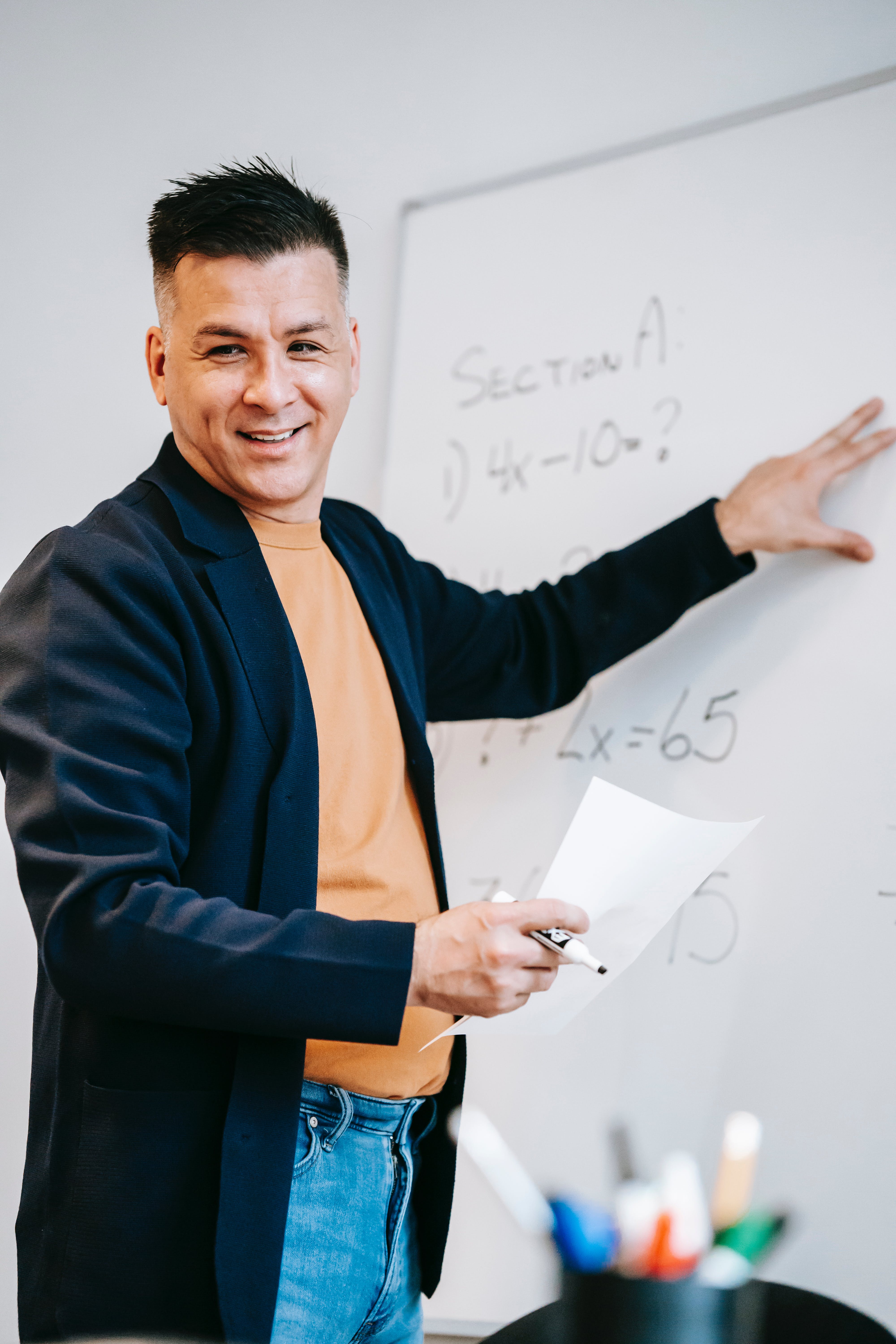
Michael Ryaboy

John

Patric

Tarzine Rack

Adam Nasir

Pete

Edward A
SAFe Scrum Master Certification COURSE CURRICULUM
1. Module 1: Introduction of Scrum in SAFe
- Concepts of Basic Agile Development
- Basics of Scrum
- Establish Agile Team in SAFe Enterprises
2. Module 2: Scrum Master Role Characterization
- Scrum Master Responsibilities
- Effective Scrum Master Characteristics
- High-performing Teams
- Use Powerful Questions to Coach Agile Team
- Team Events
- Cross Team Collaboration
- Resolve Conflicts in Teams
3. Module 3: Experience PI Planning
- Basics of PI Planning
- Drafting PI Planning
- Business Value and Final Plans
- PI Objectives and Final Plan Review
- Facilitate PI Planning
4. Module 4: Facilitate Iteration Execution
- Plan Iteration
- Track Progress of Iteration
- Refine Backlogs
- Facilitation Iteration Reviews
- Implement Relentless Improvement
- Supports Release-on-Demand and DevOps
5. Module 5: Finish PI
- Coach IP Iteration
- Preparing Team to Inspect & Adapt Event
6. Module 6: Practice SAFe
- SAFe Practice in Organizations
View More
SAFe Scrum Master Certification CERTIFICATION PATH
Your Path to Acing Your SAFe Scrum Master Certification Exam

Grasp the overarching structure and how different components interconnect.
Understand the Scrum framework, its roles, events, artifacts, and ceremonies.
Grasp the principles and practices of Kanban for visualizing work and flow.
Understand the responsibilities of a SAFe Scrum Master.
Believe in continuous improvement and learning.
Participate in simulations, case studies, and practical exercises.
Practice with Mock Exams and Take your exam.
SAFe Scrum Master Practice Tests: Sharpen Your Skills
Introduction
Preparing for the SAFe Scrum Master exam requires a comprehensive understanding of the Scaled Agile Framework (SAFe) and its principles. Practice tests are an invaluable tool for assessing your knowledge, identifying areas for improvement, and gaining confidence before taking the actual exam. This guide provides information on various SAFe Scrum Master practice test options available in Bulgaria, along with tips for effective preparation.
Types of SAFe Scrum Master Practice Tests
-
Online Practice Tests: Many training providers and online platforms offer online practice tests that simulate the actual exam format and content. These tests often provide instant feedback, detailed explanations for incorrect answers, and performance analytics.
- Mock Exams: Mock exams are full-length practice tests that closely resemble the real exam in terms of format, difficulty level, and time constraints. They can help you get a realistic sense of what to expect on exam day and identify areas where you may need to focus your studies.
- Practice Sets: Practice sets are collections of sample questions that cover different topics within the SAFe Scrum Master syllabus. They can be used to focus on specific areas of the exam or to practice time management.
- Free Practice Tests: Some training providers and online resources offer free practice tests as a way to introduce you to the exam format and assess your initial knowledge. However, these free tests may be limited in scope or content.
Benefits of Using SAFe Scrum Master Practice Tests
- Assess Your Knowledge: Practice tests help you gauge your understanding of the SAFe framework and identify areas where you may need to focus your studies.
- Identify Weaknesses: By analyzing your performance on practice tests, you can pinpoint your weaknesses and address them accordingly.
- Build Confidence: Practicing with mock exams can help you build confidence and reduce exam anxiety.
- Familiarize Yourself with the Exam Format: Practice tests can help you become familiar with the exam format, question types, and time constraints.
- Improve Time Management: Practicing under timed conditions can help you develop effective time management skills for the actual exam.
- Gain Insights into Exam Difficulty: Practice tests can give you an idea of the difficulty level of the actual exam and help you prepare accordingly.
- Receive Feedback: Many practice tests provide detailed explanations for incorrect answers, which can help you understand the concepts better and avoid making similar mistakes in the future.
Tips for Effective Practice Test Preparation
- Review the Syllabus: Ensure that you have a thorough understanding of the SAFe Scrum Master syllabus and the topics covered in the exam.
- Use Official SAFe Materials: Refer to the official SAFe training materials and study guides to reinforce your learning.
- Practice Regularly: Practice with a variety of practice tests to improve your knowledge and skills.
- Analyze Your Performance: Review your performance on practice tests to identify areas where you need to focus your studies.
- Seek Feedback: If possible, seek feedback from a mentor or study group to get insights into your performance and areas for improvement.
- Create a Study Plan: Develop a structured study plan that covers all the topics in the SAFe Scrum Master syllabus and allocate sufficient time for practice tests.
- Simulate Exam Conditions: When taking practice tests, try to create a similar environment to the actual exam, such as a quiet location and a time limit.
Conclusion
SAFe Scrum Master practice tests are an essential tool for preparing for the certification exam. By using a variety of practice tests and following effective preparation strategies, you can enhance your knowledge, build confidence, and increase your chances of success. Remember to practice regularly, analyze your performance, and seek feedback to maximize the benefits of using practice tests.
The Importance of Practice Tests for SAFe Scrum Master Certification
Practice tests play a crucial role in preparing for the SAFe Scrum Master certification exam. They offer several benefits that can significantly enhance your chances of success:
- Assessment of Knowledge: Practice tests help you gauge your understanding of the Scaled Agile Framework (SAFe) and identify areas where you may need to focus your studies. By taking practice exams, you can assess your strengths and weaknesses and tailor your preparation accordingly.
- Identification of Weaknesses: Practice tests can highlight areas where you may be struggling. By identifying these weaknesses, you can focus your efforts on improving your understanding of specific topics and concepts.
- Building Confidence: Practicing with mock exams can help you build confidence and reduce exam anxiety. Familiarity with the exam format and question types can help you feel more prepared and relaxed on exam day.
- Familiarization with Exam Format: Practice tests allow you to become accustomed to the exam format, question types, and time constraints. This familiarity can help you manage your time effectively and avoid surprises on exam day.
- Improvement in Time Management: Practicing under timed conditions can help you develop effective time management skills. This is especially important for the SAFe Scrum Master exam, which has a specific time limit.
- Gaining Insights into Exam Difficulty: Practice tests can give you an idea of the difficulty level of the actual exam. This information can help you adjust your preparation accordingly and avoid being caught off guard.
- Receiving Feedback: Many practice tests provide detailed explanations for incorrect answers. This feedback can help you understand the concepts better and avoid making similar mistakes in the future.
In conclusion, practice tests are an essential tool for preparing for the SAFe Scrum Master certification exam. By using practice tests effectively, you can assess your knowledge, identify weaknesses, build confidence, and increase your chances of success.
WHAT YOU WILL LEARN
Learning Objectives
SAFe Scrum Master Certification in Bulgaria: Grab the Best Opportunities
The SAFe Scrum Master certification is a globally recognized credential that validates your knowledge and skills in facilitating Agile teams within a SAFe environment. It is designed for individuals who have a good understanding of Scrum and Agile principles and who want to learn how to apply these principles in a scaled Agile context.
Benefits of SAFe Scrum Master Certification in Bulgaria
There are many benefits to obtaining SAFe Scrum Master certification in Bulgaria, including:
- Increased knowledge and skills: The certification process will help you deepen your understanding of SAFe and Agile principles and practices.
- Enhanced career opportunities: SAFe Scrum Masters are in high demand in Bulgaria, and certification can help you stand out from the competition.
- Improved ability to lead Agile teams: The certification will teach you how to effectively facilitate Agile teams and help them achieve their goals.
- Recognition of your expertise: SAFe Scrum Master certification is a respected credential that demonstrates your commitment to Agile and SAFe.
- Increased earning potential: SAFe Scrum Masters typically earn higher salaries than non-certified professionals in Bulgaria.
- Enhanced job security: The demand for SAFe Scrum Masters is expected to continue to grow in Bulgaria, so certification can help you secure a stable job.
- Improved job satisfaction: SAFe Scrum Masters often report higher levels of job satisfaction than non-certified professionals.
- Contribution to organizational success: SAFe Scrum Masters can help organizations in Bulgaria to improve their agility and deliver value faster.
- Personal and professional growth: The certification process can help you to develop your skills and knowledge, and to become a more effective leader.
How to Prepare for the SAFe Scrum Master Exam
The SAFe Scrum Master exam is a challenging test that requires a thorough understanding of the SAFe framework. To prepare for the exam, you should:
- Attend a SAFe Scrum Master training course: The official SAFe training courses are a great way to learn about the SAFe framework and prepare for the exam.
- Review the SAFe materials: The SAFe website provides a variety of resources, including the SAFe Guide, SAFe for Teams, and SAFe for Business Agility.
- Practice with mock exams: There are a number of online resources that offer mock exams to help you prepare for the real thing.
- Join a study group: A study group can provide you with support and accountability as you prepare for the exam.
Tips for Taking the SAFe Scrum Master Exam
- Be prepared: Make sure you have a good understanding of the SAFe framework before taking the exam.
- Manage your time: The exam has a time limit, so it is important to pace yourself and answer all of the questions.
- Read the questions carefully: Pay attention to the details of each question and make sure you understand what is being asked.
- Use the process of elimination: If you are not sure of the answer to a question, try to eliminate incorrect answers.
- Relax and stay focused: It is important to stay calm and focused during the exam.
Additional Tips
- Find a mentor: A mentor can provide you with guidance and support as you prepare for the exam.
- Stay up-to-date on the latest trends in Agile: Agile is a constantly evolving field, so it is important to stay up-to-date on the latest trends and best practices.
- Network with other Agile professionals: Networking with other Agile professionals can help you learn new things and stay motivated.
- Believe in yourself: You can do it!
Conclusion
The SAFe Scrum Master certification is a valuable credential that can open up new opportunities for you. By following the tips in this guide, you can increase your chances of success on the exam and achieve your goal of becoming a certified SAFe Scrum Master.
Additional Considerations
- Consider the cost of the certification: The cost of the SAFe Scrum Master certification can vary depending on the training provider and the location of the course. Be sure to factor in the cost of the certification when making your decision.
- Think about your career goals: The SAFe Scrum Master certification can be a valuable asset for anyone who wants to advance their career in Agile project management. However, it is important to consider your career goals and make sure that the certification is a good fit for you.
- Do your research: There are many different training providers that offer SAFe Scrum Master certification. It is important to do your research and choose a provider that is reputable and offers high-quality training.
- Be patient: It takes time to prepare for and pass the SAFe Scrum Master exam. Don't get discouraged if you don't pass the first time. Just keep studying and practicing, and you will eventually achieve your goal.
By carefully considering these factors, you can make an informed decision about whether or not to pursue the SAFe Scrum Master certification. Additionally, it is important to note that the SAFe Scrum Master certification is not a one-time event. It is a journey that requires continuous learning and development. Once you are certified, you should continue to stay up-to-date on the latest trends and best practices in Agile project management. You should also consider pursuing additional SAFe certifications, such as the SAFe Advanced Program Manager or the SAFe Release Train Engineer.
By investing in the SAFe Scrum Master certification, you can increase your knowledge, skills, and career opportunities. You can also help your organization to become more agile and successful.
Specific Considerations for Bulgaria
- Local training providers: There are a number of training providers in Bulgaria that offer SAFe Scrum Master certification. When choosing a provider, be sure to consider their reputation, experience, and the quality of their training materials.
- Government funding: If you are eligible, you may be able to access government funding to help offset the cost of the certification.
- Networking opportunities: There are many Agile communities and meetups in Bulgaria where you can network with other professionals. This can be a great way to learn from others and find support.
By considering these factors, you can increase your chances of success in obtaining the SAFe Scrum Master certification in Bulgaria.
Additional Benefits of SAFe Scrum Master Certification in Bulgaria
- Increased recognition and credibility: SAFe Scrum Master certification is a globally recognized credential that can help you stand out from the competition and establish yourself as an expert in Agile project management.
- Improved communication and collaboration: SAFe Scrum Masters are trained in facilitation and communication skills, which can help them to improve collaboration between team members and stakeholders.
- Increased innovation: SAFe Scrum Masters can help organizations to foster a culture of innovation by encouraging experimentation and continuous improvement.
- Improved customer satisfaction: SAFe Scrum Masters can help organizations to deliver products and services that meet the needs of their customers.
- Stronger leadership skills: The SAFe Scrum Master certification can help you to develop strong leadership skills, such as servant leadership, empowerment, and collaboration.
- Increased job satisfaction: SAFe Scrum Masters often report higher levels of job satisfaction than non-certified professionals.
- Contribution to organizational success: SAFe Scrum Masters can help organizations to achieve their strategic goals by improving their agility and efficiency.
By obtaining SAFe Scrum Master certification, you can gain a competitive advantage in the Bulgarian job market and contribute to the success of your organization.
WHO CAN ATTEND THE SAFe Scrum Master Certification CERTIFICATION TRAININGN IN BULGARIA
Who This Course Is For

PREREQUISITES FOR SAFe Scrum Master Certification IN BULGARIA
Prerequisites and Eligibility
Familiarity with Agile principles and the Scrum framework is beneficial.
Completion of the SAFe for Teams course is required to establish a foundation in SAFe concepts.
Passing the SAFe Scrum Master exam (SSM) validates your understanding of SAFe and Scrum principles.

SAFe Scrum Master Certification CERTIFICATION FAQS
1. What is a SAFe Scrum Master?
A SAFe Scrum Master is a professional who facilitates Agile teams within the Scaled Agile Framework (SAFe) to deliver value efficiently. They coach teams, remove impediments, and ensure alignment with SAFe principles.
2. What is the difference between a Scrum Master and a SAFe Scrum Master?
A traditional Scrum Master focuses on a single team, while a SAFe Scrum Master works within the broader SAFe framework, often supporting multiple teams and aligning them with the Program Increment (PI) objectives.
3. What are the key responsibilities of a SAFe Scrum Master?
- Facilitating Agile ceremonies (e.g., Sprint Planning, Daily Standups, Retrospectives).
- Removing impediments for the team.
- Coaching teams on Agile principles and practices.
- Supporting the Product Owner in backlog refinement.
- Ensuring alignment with PI objectives.
4. What skills are required to become a successful SAFe Scrum Master?
- Strong facilitation and communication skills.
- Deep understanding of Agile and SAFe principles.
- Problem-solving and conflict resolution abilities.
- Leadership and coaching skills.
- Knowledge of Lean-Agile practices.
5. Is certification necessary to become a SAFe Scrum Master?
While not mandatory, certification (e.g., SAFe Scrum Master Certification) is highly recommended as it validates your knowledge and increases employability.
6. What is the SAFe Scrum Master Certification?
The SAFe Scrum Master Certification (SSM) is a credential offered by Scaled Agile, Inc. It demonstrates expertise in applying Scrum within the SAFe framework.
7. How do I get certified as a SAFe Scrum Master?
- Attend the official SAFe Scrum Master course (2-day training).
- Pass the online exam.
- Maintain certification through continuous learning and renewal.
8. What is the cost of the SAFe Scrum Master certification?
The cost is typically around $995-$1,295 for the 2-day course, depending on the training provider.
9. How long does the SAFe Scrum Master certification last?
The certification is valid for 1 year and requires renewal annually by earning 10 continuing education units (SEUs) and paying a renewal fee.
10. What is the average salary of a SAFe Scrum Master?
The average salary varies by location and experience:
- USA : $90,000–$120,000 per year.
- India : ₹10–20 lakhs per year.
- Europe : €60,000–€90,000 per year.
11. What industries hire SAFe Scrum Masters?
Industries include:
- IT and software development.
- Financial services.
- Healthcare.
- Manufacturing.
- Government and defense.
12. What is the career path for a SAFe Scrum Master?
Junior Scrum Master → SAFe Scrum Master → Release Train Engineer (RTE) → Agile Coach → Transformation Lead.
13. Can a SAFe Scrum Master work remotely?
Yes, many organizations allow remote work, especially in tech companies or those with distributed teams.
14. What tools should a SAFe Scrum Master be familiar with?
- Jira, Azure DevOps, or Rally for Agile project management.
- Confluence or SharePoint for documentation.
- Collaboration tools like Slack, Microsoft Teams, or Zoom
15. What is a Release Train Engineer (RTE), and how does it relate to a SAFe Scrum Master?
An RTE facilitates Agile Release Trains (ARTs) at the program level, coordinating multiple teams. A SAFe Scrum Master can advance to become an RTE.
16. What is the difference between a SAFe Scrum Master and an Agile Coach?
A SAFe Scrum Master focuses on team-level execution, while an Agile Coach works at the organizational level to drive Agile transformation.
17. How does SAFe differ from other Agile frameworks like Scrum or Kanban?
SAFe is a scaled framework designed for large enterprises, integrating Scrum, Kanban, and Lean principles to coordinate multiple teams.
18. What challenges do SAFe Scrum Masters face?
- Resistance to Agile adoption.
- Balancing team autonomy with organizational goals.
- Managing dependencies across teams.
- Aligning with PI objectives.
19. How important is experience in becoming a SAFe Scrum Master?
Experience in Agile methodologies and team facilitation is crucial. Prior roles as a Scrum Master, Project Manager, or Team Lead are beneficial.
20. Can a non-technical person become a SAFe Scrum Master?
Yes, but understanding the technical aspects of the team’s work can enhance effectiveness.
21. What is a Program Increment (PI) in SAFe?
A PI is a timebox (typically 8–12 weeks) during which multiple Agile teams work together to deliver value. The SAFe Scrum Master ensures their team contributes to PI objectives.
22. What is PI Planning, and what role does the SAFe Scrum Master play?
PI Planning is a key event where teams plan work for the upcoming PI. The SAFe Scrum Master facilitates team preparation, participation, and follow-through.
23. How does a SAFe Scrum Master handle conflicts within the team?
By fostering open communication, mediating discussions, and helping the team find collaborative solutions.
24. What is the role of metrics in a SAFe Scrum Master’s job?
Metrics (e.g., velocity, burndown charts) help track progress, identify bottlenecks, and improve team performance
25. How does a SAFe Scrum Master contribute to continuous improvement?
By facilitating retrospectives, encouraging feedback loops, and promoting a culture of learning and adaptation.
26. What is the importance of servant leadership for a SAFe Scrum Master?
Servant leadership emphasizes empowering the team, removing obstacles, and fostering a collaborative environment.
27. How does a SAFe Scrum Master interact with the Product Owner?
They collaborate to ensure the backlog is well-refined, priorities are clear, and the team delivers value consistently.
28. What is the role of a SAFe Scrum Master in DevOps?
They support collaboration between development and operations teams to enable continuous delivery and integration.
29. Can a SAFe Scrum Master work with multiple teams?
Yes, they often support multiple teams, especially in large-scale Agile implementations.
30. What is the typical team size managed by a SAFe Scrum Master?
5–11 members per team, following the Scrum guidelines.
31. How does a SAFe Scrum Master handle scope changes?
By working with the Product Owner and stakeholders to assess impact, prioritize changes, and adjust plans accordingly.
32. What is the role of a SAFe Scrum Master in risk management?
They identify risks early, escalate when necessary, and help the team mitigate them.
33. How does a SAFe Scrum Master foster innovation?
By encouraging experimentation, supporting new ideas, and creating a safe environment for learning.
34. What soft skills are critical for a SAFe Scrum Master?
Empathy, active listening, adaptability, and emotional intelligence
35. How does a SAFe Scrum Master measure success?
Through team performance metrics, stakeholder satisfaction, and alignment with business goals.
36. What is the role of a SAFe Scrum Master in a distributed team?
Facilitating communication, ensuring alignment, and addressing challenges unique to remote work.
37. How does a SAFe Scrum Master stay updated with industry trends?
By attending conferences, joining Agile communities, reading blogs/books, and participating in webinars.
38. What are the common mistakes made by new SAFe Scrum Masters?
- Micromanaging the team.
- Focusing too much on processes rather than outcomes.
- Ignoring organizational culture and resistance.
39. How does a SAFe Scrum Master handle burnout in the team?
By promoting work-life balance, managing workload, and fostering a supportive team culture.
40. What is the role of a SAFe Scrum Master in Lean Portfolio Management?
They ensure the team’s work aligns with portfolio objectives and strategic themes.
41. .How does a SAFe Scrum Master contribute to value delivery?
By ensuring the team focuses on delivering high-priority features and meeting PI objectives.
42. What is the difference between SAFe 6.0 and earlier versions?
SAFe 6.0 introduced enhancements like the Continuous Learning Culture competency and improved guidance for Business Agility
43. What is the role of a SAFe Scrum Master in a Waterfall-to-Agile transition?
They guide the team in adopting Agile practices, address resistance, and ensure smooth integration into the SAFe framework.
44. How does a SAFe Scrum Master handle dependencies between teams?
By coordinating with other Scrum Masters and stakeholders to resolve cross-team dependencies.
45. What is the role of a SAFe Scrum Master in Agile maturity assessments?
They help evaluate the team’s Agile practices and identify areas for improvement.
46. How does a SAFe Scrum Master balance flexibility with deadlines?
By prioritizing work, managing scope, and ensuring the team stays focused on delivering value.
47. What is the role of a SAFe Scrum Master in fostering psychological safety?
They create an environment where team members feel safe to share ideas, take risks, and admit mistakes.
48. How does a SAFe Scrum Master handle resistance to change?
By understanding concerns, providing education, and demonstrating the benefits of Agile practices.
49. What is the role of a SAFe Scrum Master in fostering a Lean-Agile mindset?
They promote principles like customer focus, continuous improvement, and waste reduction.
50. What is the future outlook for SAFe Scrum Masters?
As organizations increasingly adopt Agile and SAFe, the demand for skilled SAFe Scrum Masters is expected to grow, making it a promising career choice.
View More
1. What are the key benefits of becoming a SAFe Scrum Master?
- Career growth in Agile and SAFe environments.
- Opportunities to lead and coach teams.
- Enhanced problem-solving and leadership skills.
- High demand for skilled SAFe professionals.
- Competitive salary and job security.
2. How does being a SAFe Scrum Master benefit my career?
It opens doors to roles like Release Train Engineer (RTE), Agile Coach, or Transformation Lead, offering upward mobility in Agile and Lean-Agile careers.
3. Does being a SAFe Scrum Master improve my leadership skills?
Yes, it enhances leadership abilities through servant leadership, team facilitation, and conflict resolution.
4. Is the SAFe Scrum Master role financially rewarding?
Yes, SAFe Scrum Masters earn competitive salaries due to their specialized skills in scaling Agile practices.
5. What personal satisfaction comes from being a SAFe Scrum Master?
Helping teams succeed, fostering collaboration, and seeing tangible results from your efforts provide immense satisfaction.
6. How does being a SAFe Scrum Master enhance my communication skills?
You’ll constantly interact with teams, stakeholders, and leadership, improving your ability to communicate effectively at all levels.
7. Does being a SAFe Scrum Master offer flexibility in work?
Yes, many organizations allow remote work, especially for experienced SAFe Scrum Masters managing distributed teams.
8. What are the networking benefits of being a SAFe Scrum Master?
You’ll collaborate with cross-functional teams, Agile coaches, RTEs, and leaders, expanding your professional network
9. How does being a SAFe Scrum Master contribute to organizational success?
By ensuring teams deliver value efficiently, aligning with business goals, and driving continuous improvement
10. Does being a SAFe Scrum Master make me more adaptable?
Yes, working in dynamic Agile environments helps you adapt quickly to changes and challenges.
11. What are the benefits of SAFe Scrum Master certification?
- Validates your expertise in SAFe and Agile principles.
- Increases employability and earning potential.
- Provides access to SAFe communities and resources.
12. How does being a SAFe Scrum Master foster innovation?
By encouraging experimentation, supporting new ideas, and creating an environment where creativity thrives.
13. Does being a SAFe Scrum Master improve team performance?
Yes, by removing impediments, facilitating ceremonies, and coaching teams on best practices.
14. How does being a SAFe Scrum Master promote work-life balance?
The role emphasizes servant leadership and team empowerment, reducing micromanagement and stress.
15. What are the mental health benefits of being a SAFe Scrum Master?
Fostering psychological safety and resolving conflicts can create a positive work environment, benefiting both you and your team
16. How does being a SAFe Scrum Master help with time management?
Facilitating Agile ceremonies and planning processes teaches you to manage time effectively and prioritize tasks.
17. Does being a SAFe Scrum Master increase my problem-solving skills?
Yes, addressing impediments and dependencies sharpens your ability to think critically and find solutions.
18. What are the benefits of working in a SAFe environment as a Scrum Master?
- Access to structured frameworks like PI Planning.
- Collaboration with multiple teams and stakeholders.
- Clear alignment with organizational goals.
19. How does being a SAFe Scrum Master enhance my resume?
Adding SAFe expertise makes your profile stand out, especially in large enterprises adopting scaled Agile practices.
20. What are the benefits of being part of the SAFe community?
Access to global networks, events, and resources that support continuous learning and professional growth.
21. How does being a SAFe Scrum Master benefit distributed teams?
Your skills in facilitating remote collaboration and resolving dependencies are invaluable for distributed teams
22. Does being a SAFe Scrum Master teach emotional intelligence?
Yes, understanding team dynamics and resolving conflicts require high emotional intelligence.
23. How does being a SAFe Scrum Master help organizations scale Agile?
By bridging gaps between teams and ensuring alignment with SAFe principles, you contribute to successful Agile scaling.
24. What are the benefits of fostering a Lean-Agile mindset?
Improved efficiency, reduced waste, and faster delivery of value to customers.
25. Does being a SAFe Scrum Master help with change management?
Yes, guiding teams through Agile transformations builds expertise in managing change effectively.
26. How does being a SAFe Scrum Master promote continuous learning?
You’re constantly exposed to new tools, techniques, and industry trends, fostering a culture of lifelong learning
27. What are the benefits of facilitating PI Planning?
PI Planning ensures alignment, clarifies objectives, and fosters collaboration across teams, leading to better outcomes.
28. How does being a SAFe Scrum Master improve stakeholder relationships?
By ensuring transparency, delivering value, and maintaining open communication with stakeholders.
29. Does being a SAFe Scrum Master help reduce project risks?
Yes, by identifying risks early and implementing mitigation strategies.
30. What are the benefits of working with cross-functional teams?
Exposure to diverse perspectives and skill sets enhances your understanding of different domains and improves collaboration.
31. How does being a SAFe Scrum Master drive customer satisfaction?
By ensuring teams focus on delivering high-priority features and meeting customer needs.
32. Does being a SAFe Scrum Master encourage innovation in the organization?
Yes, by fostering a culture of experimentation and continuous improvement.
33. What are the benefits of servant leadership in this role?
Empowering teams, building trust, and creating a supportive environment lead to higher engagement and productivity.
34. How does being a SAFe Scrum Master benefit product quality?
By promoting practices like continuous integration, testing, and feedback loops, you ensure higher-quality deliverables.
35. Does being a SAFe Scrum Master improve team morale?
Yes, by fostering psychological safety, recognizing achievements, and resolving conflicts.
36. What are the benefits of working in a fast-paced Agile environment?
You develop resilience, adaptability, and the ability to thrive under pressure.
37. How does being a SAFe Scrum Master contribute to business agility?
By aligning teams with strategic goals and enabling faster responses to market changes
38. What are the benefits of using metrics in this role?
Metrics help track progress, identify bottlenecks, and demonstrate the team’s impact on business outcomes
39. Does being a SAFe Scrum Master enhance my coaching skills?
Yes, coaching teams on Agile practices and helping them grow professionally develops your mentoring abilities.
40. How does being a SAFe Scrum Master promote DevOps practices?
By fostering collaboration between development and operations teams to enable continuous delivery.
41. What are the benefits of working with Product Owners?
Close collaboration ensures clear priorities, effective backlog management, and alignment with customer needs.
42. Does being a SAFe Scrum Master help reduce technical debt?
Yes, by promoting sustainable development practices and addressing issues early.
43. How does being a SAFe Scrum Master improve decision-making?
By encouraging data-driven decisions and empowering teams to self-organize.
44. What are the benefits of handling dependencies effectively?
Reduced delays, improved coordination, and smoother delivery of value.
45. Does being a SAFe Scrum Master help organizations achieve their goals?
Yes, by ensuring teams align with PI objectives and strategic themes.
46. How does being a SAFe Scrum Master promote a culture of trust?
By fostering transparency, open communication, and collaboration.
47. What are the benefits of working in a SAFe ecosystem?
Structured frameworks, clear roles, and alignment with organizational goals make scaling Agile easier.
48. Does being a SAFe Scrum Master prepare me for leadership roles?
Yes, the skills you develop position you for roles like RTE, Agile Coach, or Transformation Lead.
49. How does being a SAFe Scrum Master benefit the organization’s bottom line?
By improving efficiency, reducing waste, and delivering value faster, you directly impact profitability.
50. What is the long-term benefit of being a SAFe Scrum Master?
A fulfilling career with opportunities for growth, leadership, and making a meaningful impact on teams and organizations.
View More
View More
View More
View More
View More
RECOMMENDED BLOGS FOR SAFe Scrum Master Certification CERTIFICATION
Expert Articles on SAFe Scrum Master Certification
Read More...
Read More...
Read More...
Need More Information ?
Have more questions or need personalized guidance ?

SAFe Scrum Master Certification TRAINING CERTIFICATION IN BULGARIA
Earn The Coveted SAFe Scrum Master Certification Certification
Sample Certificate Image
View More



